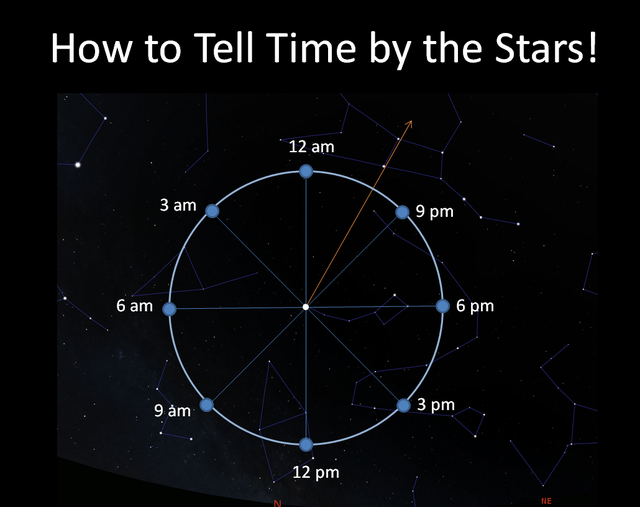If you can find the BIG DIPPER, you can find the big clock in the sky!
From the northern hemisphere, the big dipper is above the horizon for most of the year. In the spring time (especially in March), it’s fun and easy to learn how to tell time by the stars!
(Did you miss my free astronomy class? Go here for the next one coming up: https://superchargedscience.com/stars )
First, go outside after sunset and find the Big Dipper.
Use a compass if you need to to find NORTH, then tilt your head back and look up from the horizon for seven bright stars.
Draw a line through two bowl stars (furthest from the handle) and extend that line so it hits the north “pole” star Polaris.
The “sky clock” is a 24-hour clock, not a 12-our clock like the one in your house. Polaris is the center of the clock, and the hour hand is the line you drew from the Big Dipper to Polaris.
Now use this simple formula:
The current TIME = the clock reading MINUS twice the number of months after March 6. (You can use March 1 to make it easier to figure out.)
For March, that “number of months past March” is ZERO. (See why it’s easy in March?)
So go look up at the sky clock and read what time it is!
In my image here, it’s 10 PM.
Notice how we read the sky clock COUNTERCLOCKWISE. This is opposite of the clock in your kitchen.
Let’s take another example. Suppose it’s Dec. 1st. Dec 1 is close to Dec 6, so let’s figure about 9 months (to be exact, it would be 8.75 months, but let’s make it easy to calculate this time through). The night sky looks like the second image (without the clock superimposed over it).
Can you tell me what time it is?
~Aurora
P.S. We’re doing more astronomy star gazing sessions every month! Be sure to join us! www.CentralCoastAstronomy.org

